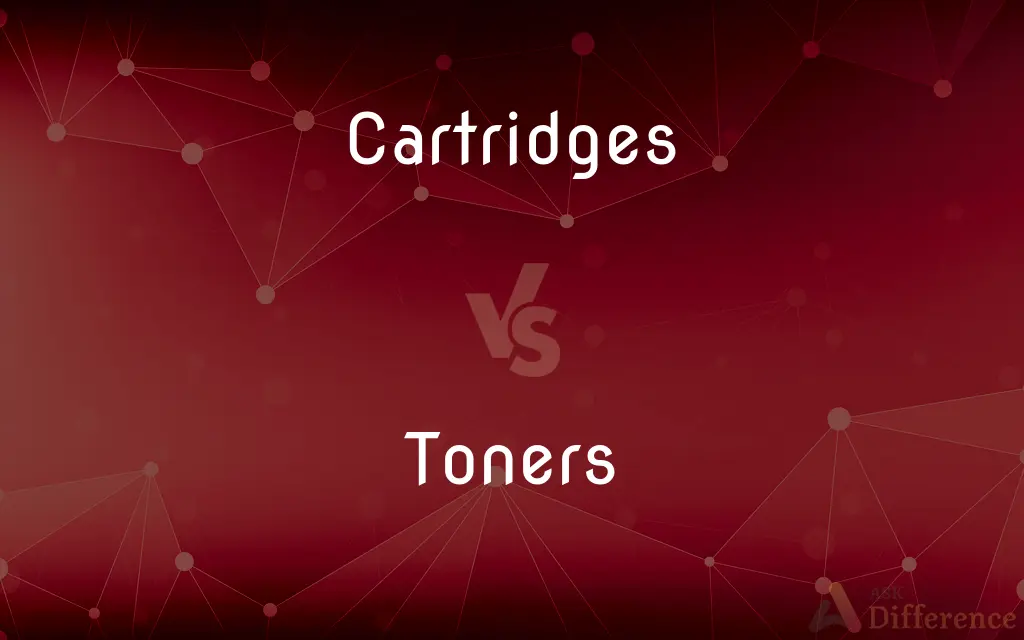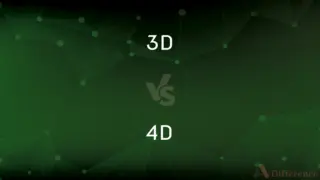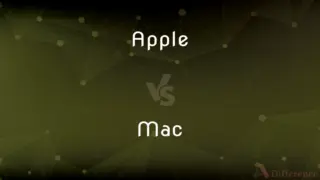Cartridges vs. Toners — What's the Difference?
Edited by Tayyaba Rehman — By Fiza Rafique — Published on November 11, 2023
Cartridges are containers holding ink or toner for printers, while toners are a type of powder used in laser printers. Both are essential for printing but serve distinct roles.

Difference Between Cartridges and Toners
Table of Contents
ADVERTISEMENT
Key Differences
Cartridges and toners play crucial roles in the world of printing, but they're not the same. Cartridges are the actual containers or casings that house ink or toner. They fit into printers and serve as the vehicle to transfer the medium, whether ink or toner, onto paper. On the other hand, toners specifically refer to the fine powder used in laser printers, which gets fused onto paper via a heated fuser unit.
Diving deeper, cartridges come in various forms depending on the type of printer. Inkjet printers use cartridges filled with liquid ink. These cartridges spray tiny droplets of ink onto paper to form images or text. Meanwhile, laser printers utilize cartridges filled with toners. Here, the toner particles get electrically charged and are attracted to a drum, which then transfers them to the paper.
Toners differ from traditional liquid ink. Composed of tiny plastic particles combined with color pigments, toners are designed for speed and precision. When printing with a laser printer, the toner is spread onto paper in a pattern and then melted or fused using heat. This makes laser prints often sharper and more resistant to smudging than inkjet prints. Cartridges, housing these toners or inks, come with a specific lifespan and need replacement or refilling once depleted.
It's also worth noting that while all toners are housed within cartridges, not all cartridges contain toner. Some cartridges are designed for inkjet printers and thus contain liquid ink. Ensuring the right cartridge, be it for ink or toner, is vital for the printer's functionality. Both cartridges and toners have evolved with technology, with manufacturers consistently aiming for better print quality, longevity, and eco-friendliness.
In essence, cartridges are the containers, and toners are the content (for laser printers). It's the combined functionality of cartridges and toners (or ink) that brings our digital files to life on paper.
ADVERTISEMENT
Comparison Chart
Nature
Container or casing
Fine powder
Used in
Both inkjet (for ink) and laser printers
Laser printers
Composition
Can contain liquid ink or toner
Plastic particles combined with color pigments
Function
Holds and transfers the medium to paper
Gets electrically charged & fused onto paper
Replacement
When ink or toner runs out
Within a cartridge when depleted
Compare with Definitions
Cartridges
Casings that fit into printers for transferring content to paper.
The printer model requires specific cartridges to function properly.
Toners
Fine powder used in laser printers for printing.
The crisp text was a result of using premium toners in the laser printer.
Cartridges
Units that need replacing or refilling after extensive use.
After printing the reports, she realized it was time to change the cartridges.
Toners
Content in laser printer cartridges ensuring precise prints.
The company switched to laser printers primarily for the efficiency of toners.
Cartridges
Containers holding printing medium for printers.
The printer alerted me that the cartridges were running low on ink.
Toners
Particles that get electrically charged and fused to paper.
The toners in this cartridge produce vibrant color prints.
Cartridges
A replaceable module in printers housing ink or toner.
I always keep spare cartridges in the office to avoid downtime.
Toners
Material that's melted onto paper for sharp prints.
The document's clarity was enhanced by the quality of the toners used.
Cartridges
The vessel in which ink or toner resides for printing tasks.
Buying high-quality cartridges ensures better print results.
Toners
A printing medium differing from traditional liquid ink.
For bulk printing, using toners is often more cost-effective.
Cartridges
A cylindrical, usually metal casing containing the primer and charge of ammunition for use in a firearm.
Toners
A chemical bath used to change the color of a photographic print or to preserve black-and-white prints or movie film.
Cartridges
Such a casing fitted with a bullet.
Toners
A powdery ink used dry or suspended in a liquid to produce a document by means of a photocopier or laser printer.
Cartridges
A similar piece of ammunition, such as a shotgun shell.
Toners
A lotion used to refresh the skin.
Cartridges
A case filled with high explosives, used in blasting.
Toners
Plural of toner
Cartridges
A small modular unit designed to be inserted into a larger piece of equipment
An ink cartridge.
A disposable cartridge of caulking compound.
Cartridges
A removable case containing the stylus and electric conversion circuitry in a phonograph pickup.
Cartridges
A case containing magnetic tape in a reel; a cassette.
Cartridges
A case containing a ribbon in a spool, for use in printers and electric typewriters.
Cartridges
A lightproof case with photographic film that can be loaded directly into a camera.
Cartridges
Plural of cartridge
Common Curiosities
Are toners liquid like ink?
No, toners are a fine powder, unlike the liquid ink in inkjet printers.
How often should I replace my cartridges?
When the ink or toner runs out or if the print quality diminishes significantly.
What makes toners different from ink?
Toners are composed of tiny plastic particles and pigments, while ink is a liquid.
Do cartridges come pre-filled with ink or toner?
Yes, most cartridges are sold pre-filled and are replaceable or refillable.
Can I use any cartridge in my printer?
Cartridges are often specific to printer models, so it's essential to use compatible ones.
How should I dispose of used cartridges?
Many manufacturers and stores offer recycling programs for used cartridges.
Do cartridges have an expiration date?
Yes, some cartridges have a shelf life, after which the quality might decrease.
What are cartridges in the context of printers?
Cartridges are containers that hold the ink or toner for printers.
How does a laser printer use toners to print?
Toners get electrically charged, attracted to a drum, then fused onto paper using heat.
Why do some people prefer toners over ink?
Toners often offer faster printing, sharper images, and are more resistant to smudging.
Are toners only for black and white printing?
No, toners come in various colors for colored laser printing as well.
Can I refill my printer's cartridges?
Some cartridges are refillable, but it's essential to ensure compatibility and quality.
Are there any environmental concerns with toners?
While toners themselves are non-toxic, it's crucial to recycle cartridges to reduce waste.
Why are some toners more expensive than others?
The price can reflect the toner's quality, brand reputation, and additional features like yield.
Can I switch between ink and toner cartridges in a printer?
No, inkjet printers use ink cartridges, while laser printers use toner cartridges. They're not interchangeable.
Share Your Discovery

Previous Comparison
3D vs. 4D
Next Comparison
Apple vs. MacAuthor Spotlight
Written by
Fiza RafiqueFiza Rafique is a skilled content writer at AskDifference.com, where she meticulously refines and enhances written pieces. Drawing from her vast editorial expertise, Fiza ensures clarity, accuracy, and precision in every article. Passionate about language, she continually seeks to elevate the quality of content for readers worldwide.
Edited by
Tayyaba RehmanTayyaba Rehman is a distinguished writer, currently serving as a primary contributor to askdifference.com. As a researcher in semantics and etymology, Tayyaba's passion for the complexity of languages and their distinctions has found a perfect home on the platform. Tayyaba delves into the intricacies of language, distinguishing between commonly confused words and phrases, thereby providing clarity for readers worldwide.












































